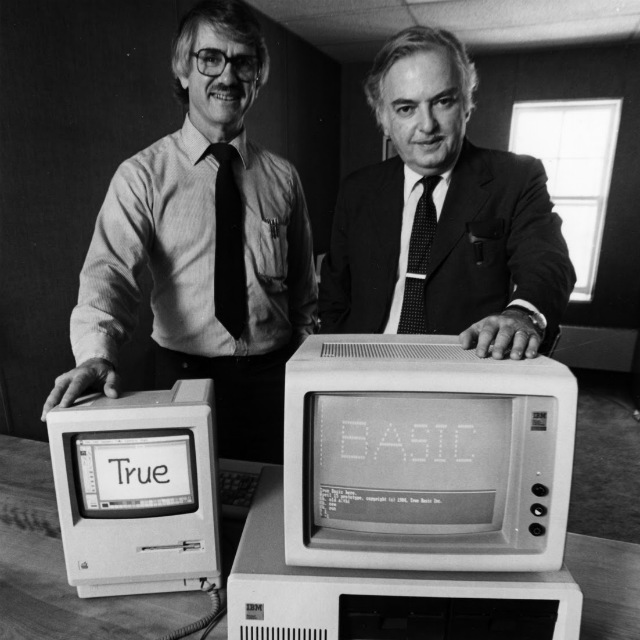John Kemeny: The Visionary Behind BASIC and the Accessible Computing Revolution
John Kemeny (1926-1992) was a Hungarian-American mathematician, computer scientist, and educator, best known for co-creating the BASIC programming language with Thomas Kurtz in 1964. Born in Budapest, Hungary, Kemeny and his family fled to the United States in 1940 to escape the Nazi regime. He earned his bachelor's degree from Princeton University, where he worked as Albert Einstein's mathematical assistant, and later completed his Ph.D. in mathematics from the same institution.

John Kemeny and Albert Einstein shared a professional connection when Kemeny worked as Einstein's mathematical assistant during his time at Princeton University. Kemeny, then an undergraduate student, assisted Einstein in various mathematical tasks and computations. This relationship provided Kemeny with invaluable experience and the opportunity to learn from one of the greatest scientific minds in history. While their collaboration was limited to Kemeny's time at Princeton, the experience had a significant impact on his intellectual development and his future contributions to the fields of mathematics and computer science.
Kemeny had a passion for education and making computing accessible to a wider audience. He work on BASIC (Beginner's All-purpose Symbolic Instruction Code) was groundbreaking and aimed to make computer programming more accessible to non-experts. Before BASIC, programming languages were often complex and difficult for beginners to learn, acting as a barrier for many who wanted to engage with computers.
In the early 1960s, Kemeny and his colleague Thomas Kurtz, both professors at Dartmouth College, recognized the need for a simple, user-friendly programming language that would make it easier for students and other non-technical users to learn programming. Together, they developed BASIC, which was designed to be intuitive, easy to learn, and flexible enough to support a wide range of applications. The language was first implemented on the GE-225 mainframe computer in 1964.
BASIC's simplicity and versatility quickly gained popularity among educational institutions, researchers, and hobbyists, leading to its widespread adoption. It became a foundational language for early microcomputers, such as the Apple II and Commodore PET, and was instrumental in fueling the personal computer revolution of the 1970s and 1980s.
Kemeny and Kurtz's vision of making computing accessible went beyond just creating a programming language. They also developed the Dartmouth Time-Sharing System (DTSS), which allowed multiple users to access a single computer simultaneously, further democratizing access to computing resources. The DTSS became an important precursor to modern-day cloud computing and paved the way for the development of other time-sharing systems.
Kemeny's work on BASIC and the DTSS emphasized the importance of making technology available to a broad audience. His efforts have had a lasting impact on the fields of computer science and education, inspiring generations of programmers and fostering widespread computer literacy.
In addition to his achievements in computer science, Kemeny served as the 13th president of Dartmouth College from 1970 to 1981, where he implemented several progressive reforms, including the adoption of a coeducational system and the establishment of a strong commitment to diversity and inclusion. Kemeny's impact on the fields of mathematics, computer science, and education is immense and enduring, as his efforts have helped shape the technological landscape we know today.